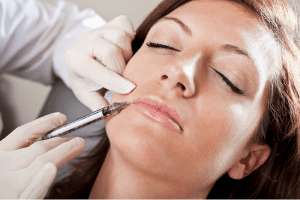Botulinum was once considered one of the most deadly toxins on earth, but in recent years is being used in an increasing number of medical applications. The pharmaceutical solution is available in varying forms as Botox or Dysport in the United Kingdom and Ireland. The Allergen Company first patented Botox, but the name is commonly used interchangeably for both medications by the general public. In 2006, the solutions had gained immediate acceptance in the treatment of various medical ailments including depression, prostate disease, vocal problems and urinary incontinence. Though Botox and Dysport use has become increasingly common in the medical profession, many health care providers encounter patients with numerous fears and misinformation related to the treatment. Many acquaint the medication with the infamous food toxin or express concern regarding possible paralyzing side effects.
Many useful modern day medications are solutions derived from toxic substances. Well-known medications including adrenalin, atropine, digoxin and lidocaine are commonly used in cardiac patients and were formulated by extracting substances from animals, plants, or microbes that may be toxic in and of themselves. The foxglove plant is used to manufacture digoxin. The plant itself is very dangerous if consumed by an average person, as it causes cessation of the heart. However, diluted and formulated properly, digoxin is used to control abnormally fast heart rates. Likewise, atropine is developed from the nightshade family and though the plant can cause many serious side effects, a substance within the plant is medically used to control the nerves that regulate heartbeat. Ladies in ancient cultures used the substance to dilate their pupils, thus fooling suitors into believing they were attractive. Botox is derived from the bacteria that causes serious food poisoning, but the substance is carefully diluted. Trained physicians are aware of which muscle groups the solution can be injected into to prevent possible hazardous effects. It is not uncommon for newborns to receive such injections when suffering from cerebral palsy or other forms of muscle spasticity. The infants in these instances experience no adverse effects. Health care providers find that common widely used substances, including antibiotics and aspirin, pose a much larger health risk to patients. As with any medication, possible anaphylaxis can occur with Botox injections. Trained physicians should only provide the treatment in settings containing proper emergency medical equipment.
 differences among them are how long they take, what they are made of, and how they work.
differences among them are how long they take, what they are made of, and how they work.






